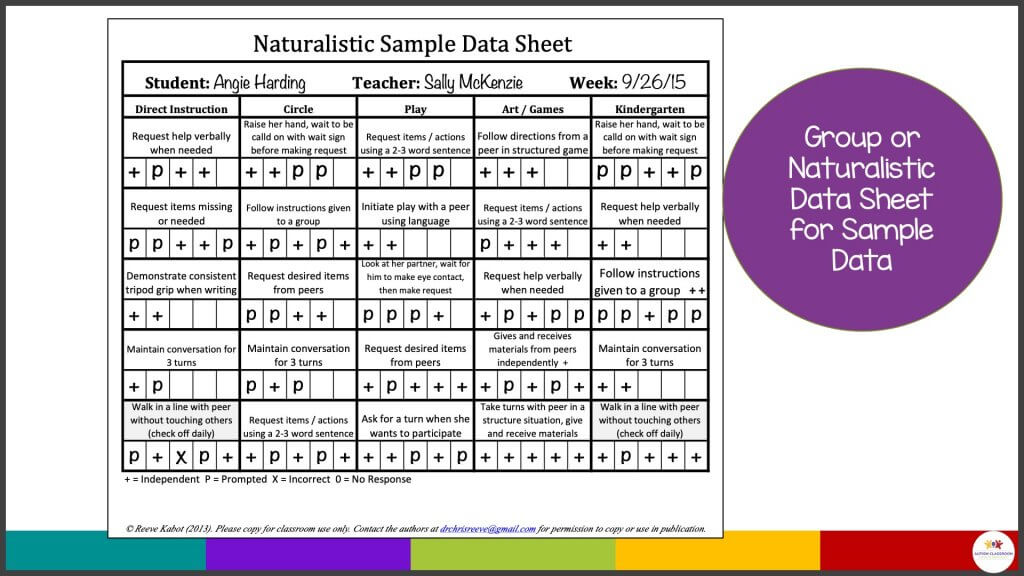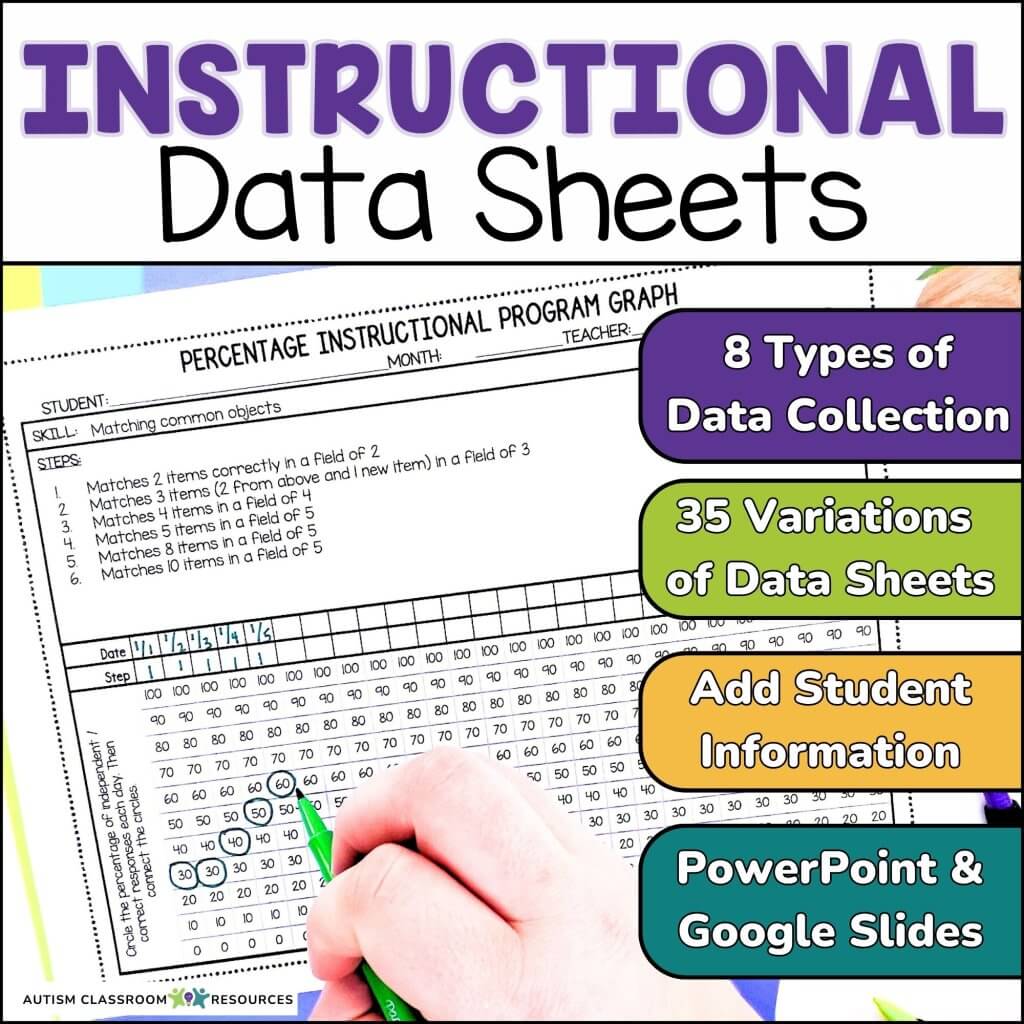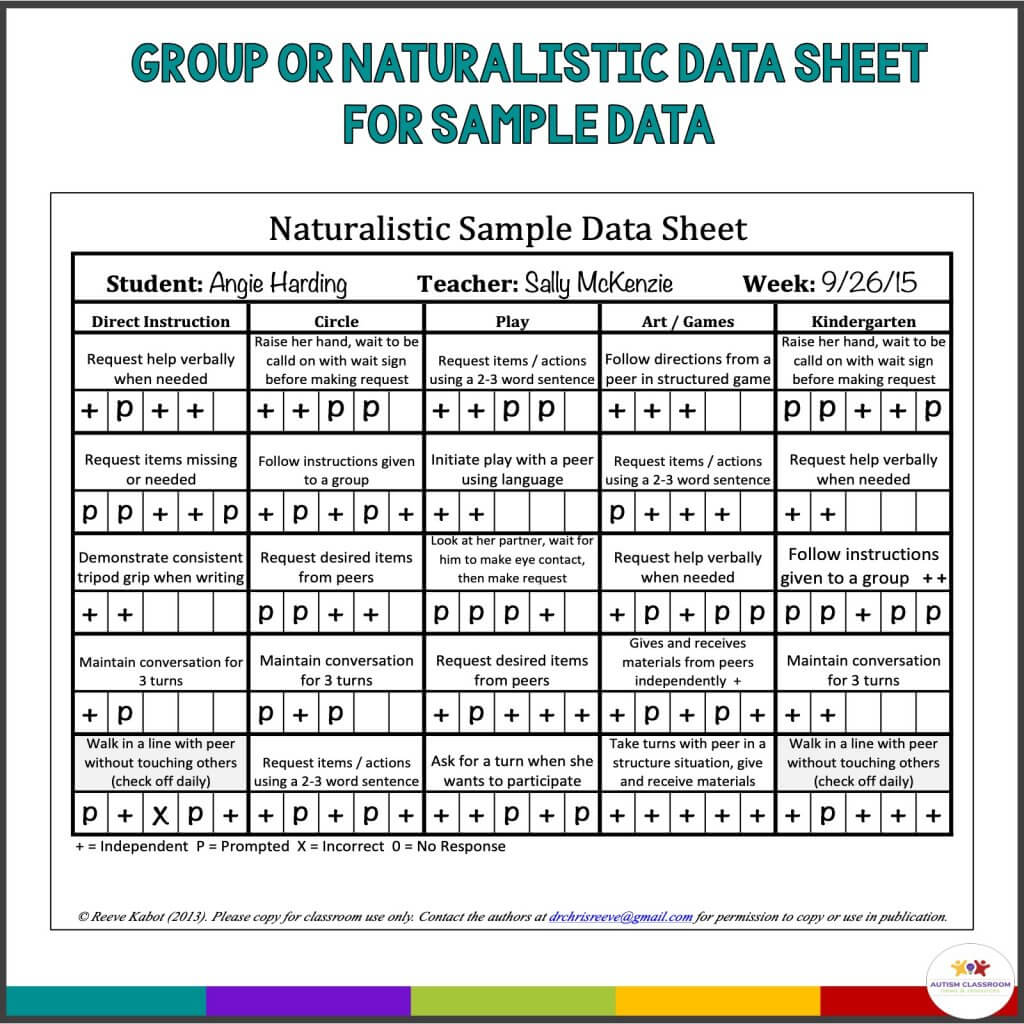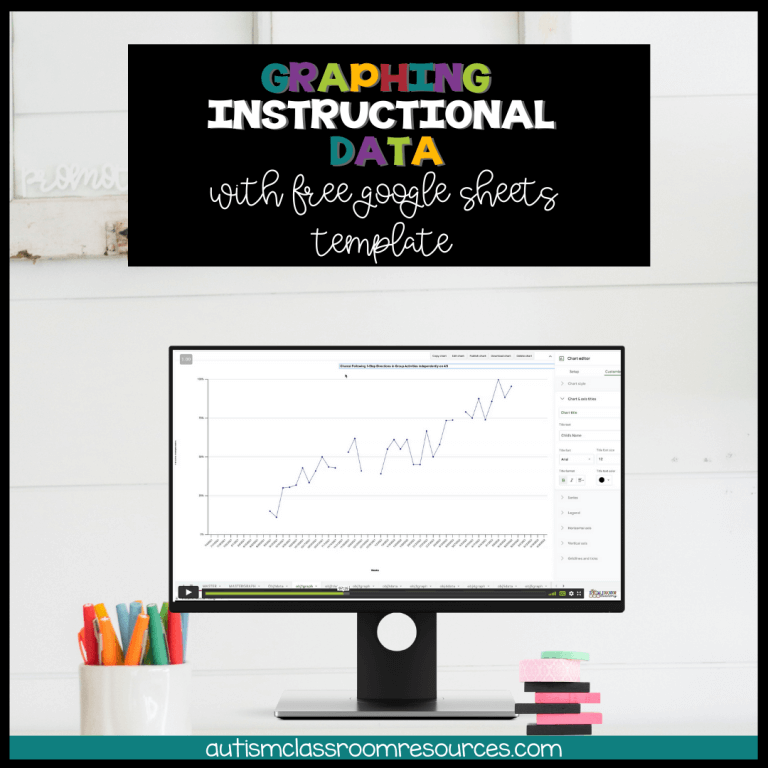We all know we need data. We all know parents and administration require data collection in special education. And we all know that data can save us if there is ever a question about what the student knows or doesn’t know and what he has been taught. Hopefully we all also know that research shows that teachers who take data and review it regularly have students who make more progress. What many people aren’t always so sure about is how much data is enough data?

Do you have to take data every minute of the day to make it meaningful?
Answer: NO.
Is it OK if I just take data once during the 9-week grading period?
Answer: NO
Is it OK to just have anecdotal notes about an individual’s progress that I write at the end of the week?
Answer: Again NO.
To help answer some of what I hear as the most frequently asked questions about data, I thought I would address How much data is enough data collection in special education? and talk about considerations in deciding about how much data is enough.
What Do I Need to Think for Data Collection in Special Education?
1. Take data on skills / behavior as it happens (or as soon afterward as possible).
I once worked with a district that was really proud of how well their teachers took data. It was the first time I had visited, so I asked about how they took it, what their procedures were, etc. They assured me that when I walked back into the classroom we were visiting I would see teachers taking data all the time. Instead, we ended up walking into the classroom just after the students had gone home and the teachers and aides were talking as they cleaned. The conversation went like this.
Teacher: Did anyone see [child] make a request today?
Aide 1: I did today at snack. (Note there is no indication of how many requests, whether they were independent, whether they were correct, or whether other opportunities to make requests were missed).
At this point I turned to the administrator I was with and said, is this how they take data? She was surprised. All this time she thought the data she was reviewing was reviewing had been taken at the time the instruction was taking place. Some of the problems with this system of taking data include:
- It’s memories of data, not actual observations. My memory is getting worse as time moves forward so it’s not reliable for data collection in special education for very long after the behavior/skill has occurred. You also tend to remember what fits with what you think is happening–so if you think Child X is getting better at requesting, you are likely to remember the times he requested instead of the times he should have but didn’t.
- They didn’t capture the number of times he didn’t do it but should. If Child X’s goals are written as he will correctly label something 8/10 times….we don’t know how many times he did it independently and correctly and how many times he didn’t. One data point (remembered from the whole session) doesn’t tell the whole story.
So, to take data as it happens, you need a system that is easy to use, portable, and that can be implemented in the situation you are in without a lot of confusion. The counter, masking tape and other tools I talked about in the last post can help with this issue.
2. Take more than 1 data point for data collection in special education
Some behavior analysts take what is called “cold probe” data. That means meaning that they take data on the first time they ask the student to do something. Remarkably for a field that thrives on data collection, we have little information about data collection in special education itself.
However, we do have a few research studies that looked at this. Lerman, Dittlinger, Fentress, & Lanagan (2012) provide a nice review as well as their study looking at this issue. Essentially, they say that the cold probe (discontinuous) method provides a rough estimate. But having 3 or more data points gives a more accurate picture. \
Discrete trials vs. natural settings
However, this research was only done on discrete trials. Typically in a discrete trial situation, I take data on each trial. The steps I am teaching are so small, I don’t want to stay on one longer than I have to. Doing that would get the child stuck on that response. However, in more naturalistic settings, it would be impossible to take data on every single occurrence.
To try to get a good picture of that, I take a weekly sample with data on 1 skill or 1 child a day. If I am working in groups (like morning meeting), I target the goals of 1 child each day for data collectio. That way I assure that I get a weekly sample of the skill. I aim for 5 data points or more during each observation. That also means I create 5 opportunities for the student to practice the skill. More is always better.
Sometimes it would be impossible to get 5 opportunities but if you can it’s a good number to aim for (mostly for math for percentages, there is no magic number). This allows you to have a sample of the data to track progress and also to problem solve.
Research note
If you click on the authors names above you will go to the article which you can download in a variety of formats from the top right corner of the page. This is an excellent journal and is great for practitioners and easy to read. It offers advice for practitioners based on the research at the end of each article and up to the last year are available for free online.
3. Collect more data if the Student is Not Making Sufficient Progress
A general rule of thumb is that if you have a behavior / skill that is not going well, you need more data. If the student is making progress, you need less data. More data allows you to problem solve what is not working so you can make changes. So in that case, take data more frequently than once a week and take it in multiple settings.
You may also want to take data with more detail. Typically I take data on correct and prompted responses in naturalistic settings. Trying to juggle too many details makes it likely I’ll make mistakes. If a student is not making progress, I might also take prompt data. Then I have more detailed data to see if the problem has to do with not fading the prompt type sufficiently for him to move forward in independence. This helps me figure out what to do to improve his performance.
4. Take Data In More Than 1 Activity
Again, if I’m taking discrete trial or direct instruction data, I take more frequent data. And I typically take it in the teaching setting. However, for students with autism, I ned to make sure I also take it at other times. Because as these students master the skill, I need to make sure it has generalized and can be used. Because after all, life isn’t discrete trials. If I’m taking samples of data in groups or naturalistic settings, I make sure that those skills can be programmed into more than 1 activity in the day. Then I take data on that skill on different days.
5. Make Sure You Take Data Samples ONLY During the Sample Period

In general, if you take data once or twice a week, you are taking a data sample. The thing you need to remember with data samples is that they have to be taken in a consistent manner. So, if you are taking data on how often a student follows a teacher direction during morning meeting, you need to make sure you only record how often it occurs during morning meeting. That means being careful to catch every time the student has the opportunity to follow a teacher direction and record the student’s response.
It also means that you have to make sure you don’t add data from other time periods into your sample. That will contaminate it. That means you can’t come back in from the playground excited that a student followed directions on the playground and record it in the morning meeting sample. Particularly since you probably missed times that the student should have followed directions on the playground and haven’t recorded them.
You can decide that on another day you should take data on the playground and take a sample there if that is something you think is important.So, to help you start thinking about naturalistic data collection in special education with samples, I’ve included a group data sheet similar to what I use. In my next post I will talk about some different ways I use it, but I’ve included an example to get you started.







